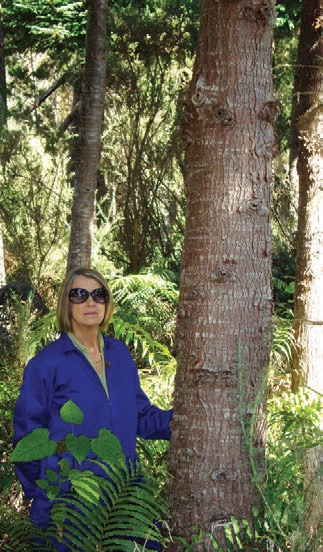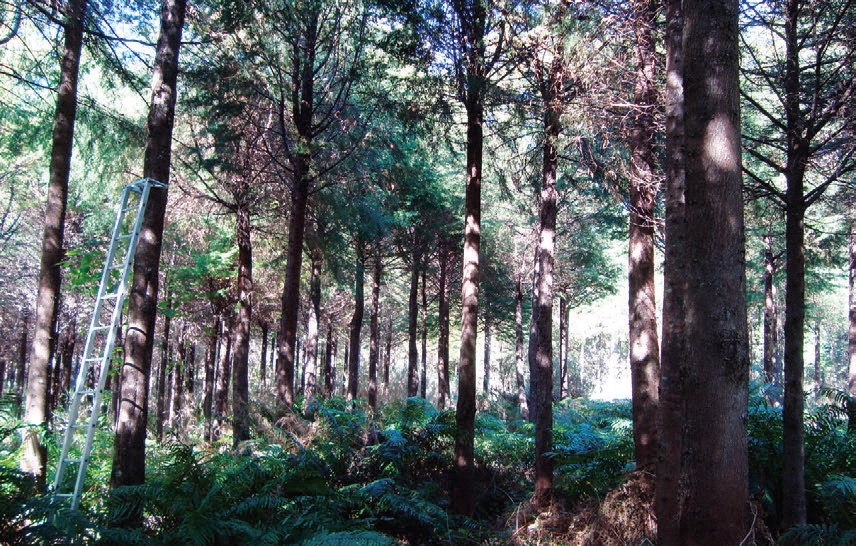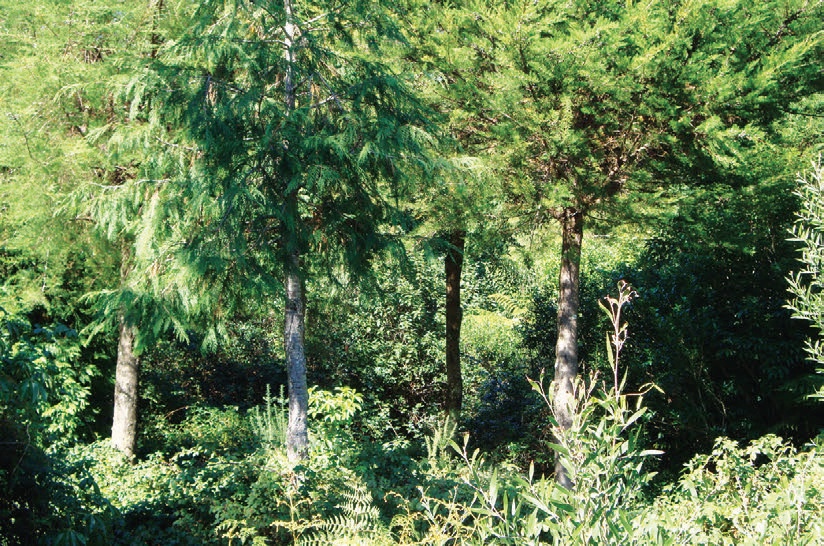High value alternatives to pine
Matt Lysaght, New Zealand Tree Grower November 2010.
When in 1993 Linda and I, along with partners Rob and Trish Roney, decided to establish a forestry block, it was planned to provide a substantial supplement to our respective retirement incomes. However, it may be that the land, rather than the trees, is the main income generator.
We bought a 35 hectare ex-mining block at Camerons, approximately 15 km south of Greymouth for a mixed species forest. Our first call was to Timberlands, the now defunct government owned forestry company, where we made contact with Mike Craw, a senior forest manager forTimberlands. Mike’s knowledge, expertise and advice were invaluable as we began our first plantings of radiata in 1994, and his support and well-considered advice remains our most valuable tool.
Approximately 16 hectares, half of our total plantings, were radiata pine. These were planted in 1994 and 1995, but we were keen to establish other species that produced timber which was not so reliant on chemical treatment for durability. We were very conscious of the environmental demands that forestry and its products could impose. Carbon credits and global warming were not such hot topics in 1993.
Planting cypress
Mike pointed out the success of Lawson cypress plantings made by the old Forest Service in the Mahinapua Forest south of Hokitika many years before and so we decided to plant 4,500 of those on four hectares of V-bladed ground. We wanted to try macrocarpa, but were advised against it due to the high incidence of canker. Another cypress, lusitanica, was suggested as being more resistant and we settled on 6,500 of those on seven hectares in 1994, again on V-bladed ground.

In planting these two cypress species we were aiming to grow high grade, high value trees that would overcome the high transport costs and provide a good return on investment. We were also wanting to grow trees that were naturally durable, had multiple end uses, and yet were still within our timeframes of 30 to 40 year rotations.
Successful at sixteen
These two species have been very successful to date. Despite some advice to the contrary, we pruned the Lawson cypress to between four and five metres and now have some excellent stems with a diameter at breast height of 20 to 25 cm with some over 30 cm. However, as with the lusitanica, there is heavy branching. The possible consequence is that there may be little value in the logs above five metres. It is obvious that the soil is a significant determinant of their growth rates, with the trees on the rockier, lighter soils having a smaller diameter at breast height than those on the heavier soils.
The lusitanica look impressive. Form pruning began with secateurs in year two and so we now have an excellent coverage of good straight trees and on average with diameters a little greater than the Lawson cypress. They are pruned to between 4.5 and 5 metres, but the heavy multiple branching above this is obvious and frequent. While we are impressed with the growth and form of the trees, does the market give them a value which agrees with our opinion?
A noticeable feature of the different species is that in recent years the pines have been hit hard with windthrow, particularly as a result of strong easterly winds. The Lawsons and lusitanica have not had any obvious toppling at all. Given the significance of this problem to commercial forestry on the West Coast, should future investment confine itself to high value trees such as these?
Forestry mix


Our final plantings undertaken in the winter of 1996 over three hectares was a rather interesting mix of seven different species. This block was in an area which was fairly wet underfoot with high scrub and re-growth bush. A large digger soon opened up the main drain, added a couple of others and began digger mounding.
The aim was to establish a long-term, sustainably managed, high value timber forest that would avoid clearfelling at harvest and not require disruption to the water channels again. We also wanted to avoid destroying significant canopy cover at any one time and to have a minimal effect on native fauna at harvesting time in the future.
The plantings were of 2,300 trees in total – 30 per cent Lawson cypress, 24 per cent lusitanica, 12 per cent western red cedar, 11 per cent blackwood, nine per cent Douglas fir, nine per cent japonica, and five per cent coastal redwood. The mix was decided on what we knew would grow well on the West Coast, what we hoped would grow well and what has subsequently struggled to do anything.
Too early
Is it working? It is too early to decide. The management of fertilising, pruning and thinning has been a battle as all trees have been treated under one regime. Pruning has been a challenge as the different species have different timing requirements and treatment methods to be applied.
As a result it would have required a far more intensive management approach to ensure the best form and growth was obtained from each species than has been possible. Difficulties of access due to excessive re-growth of blackberry, flooding and inundation by water-borne gravel, slumping and blocking of drains have all had an effect. It will be some time and take more investigation to reveal what trees have survived and in what proportions.
We believe the concept is very worthwhile and in an area with fewer site challenges could very well work successfully. Experience will determine the right combination of trees and the right proportions.
Why bother?
Is the effort and expense of this type of forestry worthwhile? A recent nearby forest block sale of 20-year-old pines is to a dairy farmer who intends to remove the trees to waste and convert to pasture.
Given the slowly encroaching dairy herds coming up the valley, do we stop any further input to the trees and wait till they make us an offer? Is there any indication that the species we planted for a more durable and sustainable forestry future are providing the returns necessary to attract future investment let alone maintain the present forests? Or are clovers and carbon credits the only foreseeable alternatives?

 Farm Forestry New Zealand
Farm Forestry New Zealand